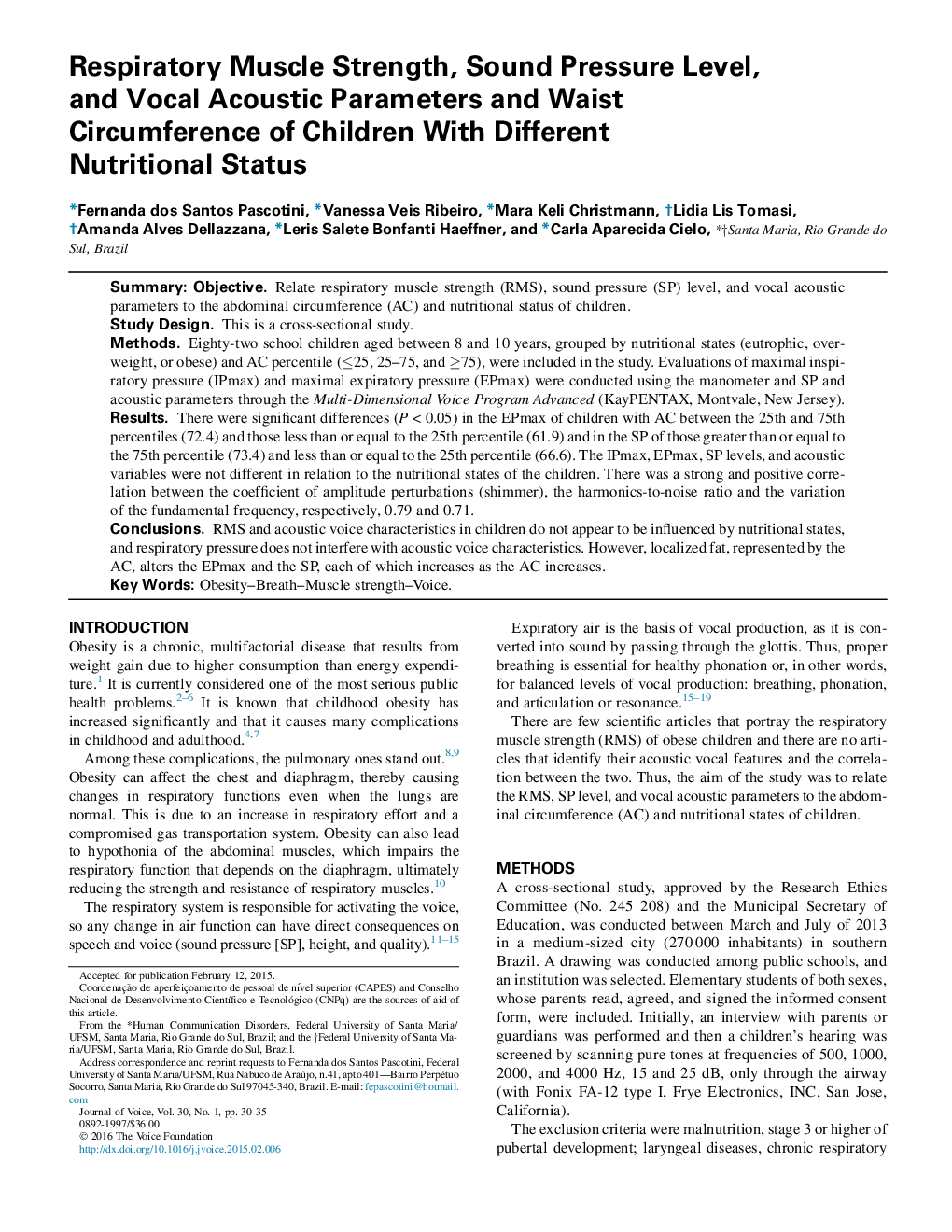| کد مقاله | کد نشریه | سال انتشار | مقاله انگلیسی | نسخه تمام متن |
|---|---|---|---|---|
| 1101244 | 953561 | 2016 | 6 صفحه PDF | دانلود رایگان |
SummaryObjectiveRelate respiratory muscle strength (RMS), sound pressure (SP) level, and vocal acoustic parameters to the abdominal circumference (AC) and nutritional status of children.Study DesignThis is a cross-sectional study.MethodsEighty-two school children aged between 8 and 10 years, grouped by nutritional states (eutrophic, overweight, or obese) and AC percentile (≤25, 25–75, and ≥75), were included in the study. Evaluations of maximal inspiratory pressure (IPmax) and maximal expiratory pressure (EPmax) were conducted using the manometer and SP and acoustic parameters through the Multi-Dimensional Voice Program Advanced (KayPENTAX, Montvale, New Jersey).ResultsThere were significant differences (P < 0.05) in the EPmax of children with AC between the 25th and 75th percentiles (72.4) and those less than or equal to the 25th percentile (61.9) and in the SP of those greater than or equal to the 75th percentile (73.4) and less than or equal to the 25th percentile (66.6). The IPmax, EPmax, SP levels, and acoustic variables were not different in relation to the nutritional states of the children. There was a strong and positive correlation between the coefficient of amplitude perturbations (shimmer), the harmonics-to-noise ratio and the variation of the fundamental frequency, respectively, 0.79 and 0.71.ConclusionsRMS and acoustic voice characteristics in children do not appear to be influenced by nutritional states, and respiratory pressure does not interfere with acoustic voice characteristics. However, localized fat, represented by the AC, alters the EPmax and the SP, each of which increases as the AC increases.
Journal: Journal of Voice - Volume 30, Issue 1, January 2016, Pages 30–35
